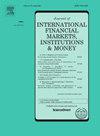The countercyclicality of microlending rates: Does the business model of microfinance institutions matter?
IF 6.1
2区 经济学
Q1 BUSINESS, FINANCE
Journal of International Financial Markets Institutions & Money
Pub Date : 2025-04-24
DOI:10.1016/j.intfin.2025.102163
引用次数: 0
Abstract
Microfinance institutions (MFIs) are critical to financial inclusion in developing countries, but face challenges in maintaining profitability while serving low-income populations, particularly during economic downturns. This study examines whether MFIs adjust interest rates in response to the business cycle, hypothesizing an increase during downturns. Analyzing data from 1,711 MFIs over 16 years (2003–2018), we find a negative relationship between interest rates and the business cycle. However, certain MFI characteristics mitigate this countercyclical behavior. Specifically, MFIs in the top tertile of the group lending method, deposit-taking MFIs, and subsidy-based MFIs show less cyclical interest rate behavior, contributing to greater stability. Further analysis sheds light on the mechanisms underlying this countercyclical behavior, leading to two main conclusions. First, shareholder-based MFIs tend to raise interest rates during economic downturns, suggesting that profit maximization drives the countercyclical effect. Second, increases in provisioning and funding costs are passed on to borrowers through higher interest rates during downturns. Using propensity score matching and Lewbel’s (2012) instrumental variable approach to address endogeneity concerns, our findings remain robust and consistent across different econometric specifications and measures of the business cycle.
小额贷款利率的反周期:小额贷款机构的商业模式重要吗?
小额信贷机构(mfi)对发展中国家的普惠金融至关重要,但在为低收入人群服务的同时保持盈利能力方面面临挑战,特别是在经济低迷时期。本研究考察小额信贷机构是否根据商业周期调整利率,假设在经济衰退期间利率会上升。分析了1711家小额信贷机构16年(2003-2018年)的数据,我们发现利率与商业周期之间存在负相关关系。然而,某些小额信贷机构的特点减轻了这种反周期行为。具体而言,在集团贷款方式中处于前五分之一的小额信贷机构、吸收存款的小额信贷机构和基于补贴的小额信贷机构表现出更少的周期性利率行为,有助于更大的稳定性。进一步的分析揭示了这种反周期行为背后的机制,得出了两个主要结论。首先,以股东为基础的小额信贷机构倾向于在经济低迷时期提高利率,这表明利润最大化驱动了逆周期效应。其次,在经济低迷时期,准备金和融资成本的增加会通过更高的利率转嫁给借款人。使用倾向得分匹配和Lewbel(2012)的工具变量方法来解决内生性问题,我们的研究结果在不同的计量经济规范和商业周期措施中保持稳健和一致。
本文章由计算机程序翻译,如有差异,请以英文原文为准。
求助全文
约1分钟内获得全文
求助全文
来源期刊
CiteScore
6.60
自引率
10.00%
发文量
142
期刊介绍:
International trade, financing and investments, and the related cash and credit transactions, have grown at an extremely rapid pace in recent years. The international monetary system has continued to evolve to accommodate the need for foreign-currency denominated transactions and in the process has provided opportunities for its ongoing observation and study. The purpose of the Journal of International Financial Markets, Institutions & Money is to publish rigorous, original articles dealing with the international aspects of financial markets, institutions and money. Theoretical/conceptual and empirical papers providing meaningful insights into the subject areas will be considered. The following topic areas, although not exhaustive, are representative of the coverage in this Journal. • International financial markets • International securities markets • Foreign exchange markets • Eurocurrency markets • International syndications • Term structures of Eurocurrency rates • Determination of exchange rates • Information, speculation and parity • Forward rates and swaps • International payment mechanisms • International commercial banking; • International investment banking • Central bank intervention • International monetary systems • Balance of payments.

 求助内容:
求助内容: 应助结果提醒方式:
应助结果提醒方式:


